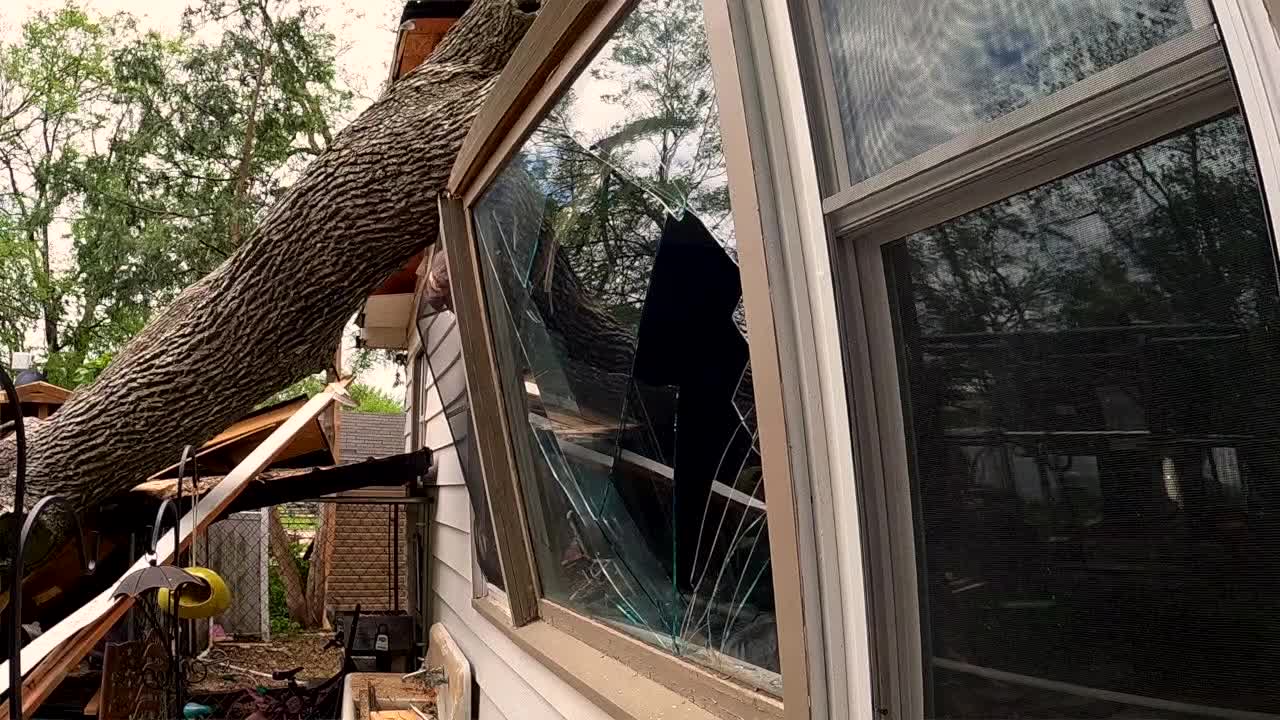Minnesota Dept. of Commerce warns of out-of-town contractors following severe storms
[anvplayer video=”5112757″ station=”998122″]
Many homes were ripped apart on Monday evening as a tornado carved its path through Forada. It created extensive damage, which follows weeks of severe storms.
“You can imagine the phones have been ringing off the hook,” said Andy Lindus, co-owner of Lindus Construction. “We’re doing our best to triage as they come. We’re dealing with four different storms in the month of May.”
Lindus explained they’ve been mostly fixing hail damage but the strong wings that came with Monday’s system also caused more extensive destruction.
“Some of those have to get triaged and moved up the schedule because there’s holes in the roof. There’s things that have to be addressed,” said Lindus.
The storms are also drawing out-of-state contractors to Minnesota.

(KSTP)
“Every time we have a storm in Minnesota, we have companies that come in from other parts of the country and go around and knock on doors in Minnesota,” said Dan Bryden, the manager of consumer services for the Minnesota Dept. of Commerce. “Some of those from out of state, they are real contractors but they’re going to disappear to some other part of the country as soon as they’re done.”
Bryden said some of the contractors aren’t licensed in Minnesota, which can present a risk to consumers. He recommends homeowners ask for identification, including a copy of their license to operate in Minnesota, and verify it with state records online.
“If they’re just not licensed in Minnesota, they’re not complying with the law and that doesn’t bode well for the kind of company you’re dealing with,” said Bryden. “If there’s something they didn’t do a good job on, [such as] two weeks later you have another storm and it turns out your roof is still leaking, it might be really hard to find that company. If they don’t have a license in Minnesota, you may never find them.”
He added, “If you can’t track the company down or they’re in another state, it’s going to be really difficult to collect from them in the long run.”
Lindus also offered a word of caution about contractors going door-to-door after storms. He encourages people to do their due diligence and be patient.
“I’m not saying that you can’t get a good job from somebody that is traveling with the storm. In fact, more often than not, when catastrophe happens, it’s really hard to pick up the pieces and put together an entire neighborhood without having workers come in,” said Lindus. “Just like any home improvement project, get three estimates, make sure you’re checking out references, check online reviews. And if you’re talking to us, we’re probably going to be able to walk you down the street to a project have in progress that you can talk to people.”
The Insurance Federation of Minnesota also warns homeowners to be wary of storm chasers.
“In recent years, we’ve seen an alarming trend of unscrupulous out-of-state storm chasing contractors who saturate areas that have had recent severe storm activity,” said Insurance Federation of Minnesota President & CEO Aaron Cocking earlier this month. “These contractors drive up claims costs by filing claims that are much higher priced than local contractors typically bid or by convincing homeowners they urgently need repair work on property that’s not actually been damaged.”
A spokesperson for the Insurance Federation also explained calls, texts, emails and social media outreach homeowners may be receiving, could be sales companies that are selling personal information to roofing contractors.
The organization recommends homeowners watch out for red flags, including contractors who ask for large upfront down payments, those that promise to get homeowners more repair work done than appears necessary or contractors who offer to pay your deductible.
Both the Insurance Federation of Minnesota and the Minnesota Dept. of Commerce encourage property owners to call their insurance company as soon as possible after a storm and take extensive photos of any damage. It’s also recommended that homeowners request to see an insurance adjustor’s identification when they visit their property.